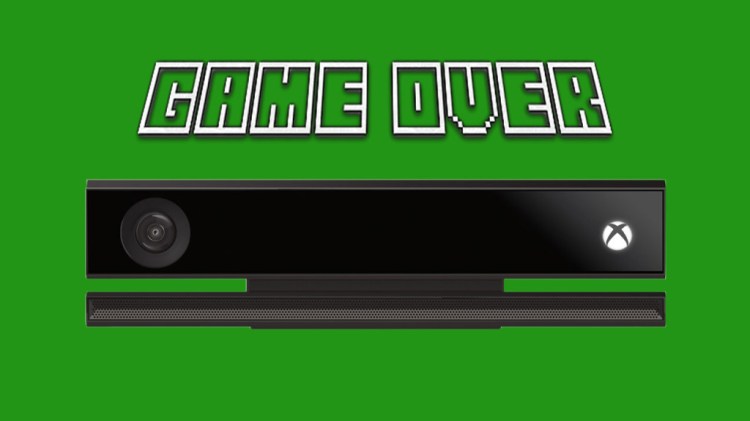This post has not been edited by the GamesBeat staff. Opinions by GamesBeat community writers do not necessarily reflect those of the staff.
At this exact moment, I’m not really sure how I feel about Microsoft’s whole “let’s sell Xbox One without Kinect” situation.
On the one hand, I’m a little bit upset, seeing as I bought my Xbox One at the time of its initial release — when the Kinect, the company’s motion-sensing peripheral, was said to be “essential” to the console’s overall experience. Then again, I’ve rather enjoyed the times in which Kinect has enabled me to record gameplay and navigate apps like Netflix with my voice. As a supplementary device, Kinect could be used to do some truly incredible things in the future. Unfortunately, I’m yet to see a game that uses Kinect in a way that makes it feel worth the extra $100 I spent when I preordered my Xbox One last July.
So why drop the Kinect from the console after nearly six months of shelf time? There could be a few reasons for this, the most prominent of which being overall sales for Xbox One, which have struggled to match up against the numbers for competitor Sony’s PlayStation 4. And although I commend Microsoft for giving players “what they want” via a Kinect-less system, I can’t help but feel as though early adopters were suckered into purchasing an accessory that the company didn’t truly believe in.
It’s no secret that developers haven’t taken full advantage of Kinect in the way Microsoft had initially intended, so maybe that has something to do with the device’s removal as well. Whatever the cause, I can’t say I’m terribly happy with the whole ordeal, and not because I’m bitter about spending the extra cash. Rather, I’m frustrated over the fact that Microsoft has demonstrated a complete lack of vision concerning fans of Xbox One by backtracking on major features and policies that the company literally shoved in the faces of consumers. Sometimes, it’s the principle of the matter.
In light of all this, head of Xbox Phil Spencer still believes that Kinect will remain relevant despite its removal as a mandatory component of Xbox One. Here’s what he had to say in a recent conversation with CNET:
If consumers choose that they don’t want Kinect, or they want to add it later, we’re going to make that available. But this is about a continuum and in the end, I hope everyone sees that the experience with Kinect is the best Xbox One experience.
In the long run, I think we’ll actually end up with more Xbox Ones with Kinect out there with this strategy.
There is a major problem with Spencer’s overall diagnosis of the situation in this instance, however. Removing Kinect from Xbox One will not increase sales for the device later on because developers will no longer need to pay attention to it as a required feature for their games. As is, Kinect has seen very little attention from developers aside from clunky physical gestures and trivial voice commands (I’m talking about you, Thief). Yet Spencer still believes that “the experience with Kinect is the best Xbox One experience.” What he has failed to realize is that the separation of the two devices means quite the opposite: lack of support for Kinect as a gaming supplement.

But what really happened from the time of the Xbox One’s debut until now that led Microsoft to believe it would be OK to remove Kinect as a primary feature of its console? Take a look at this response made in an Xbox Wire Q&A back in May of 2013 and try to tell me Microsoft hasn’t changed its vision regarding Xbox One and Kinect:
Q: Why require Kinect with every Xbox One?
A: The all new Kinect is now an essential and integrated part of the platform. By having it as a consistent part of every Xbox One, game and entertainment creators can build experiences that assume the availability of voice, gesture and natural sensing, leading to unrivaled ease of use, premium experiences and interactivity for you.
If Kinect is so “essential” and “integral” to Xbox One, why is it being removed as a required component? Business is business, and investors need to be satisfied, but the course of action taken by Microsoft in this instance demonstrates carelessness and a lack of understanding concerning the market it had hoped to tap into with Kinect during this console generation. For a device that was at one time required for the system to work, Kinect seems to have lost its place, relegated to the very same role taken up by its predecessor, Kinect for Xbox 360 — a giant plastic paperweight.
To provide more context, here’s what Microsoft corporate vice president Phil Harrison had to say concerning Kinect back in August (according to CVG): “Xbox One is Kinect. They are not separate systems. An Xbox One has chips, it has memory, it has Blu-ray, it has Kinect, it has a controller. These are all part of the platform ecosystem.”
Well, I’ve got news for you, Phil. Kinect is no longer part of the Xbox One’s ecosystem. In theory, it may still be a key element of what makes the system unique, but its removal says otherwise. It’s not crucial to a player’s experience, it’s not required to play games, and it’s not relevant when it’s removed from the box entirely. I bought my Xbox One expecting Kinect to play a pivotal role in differentiating itself from PlayStation 4, but until Microsoft proves to me otherwise, I may as well unplug my Kinect altogether.

